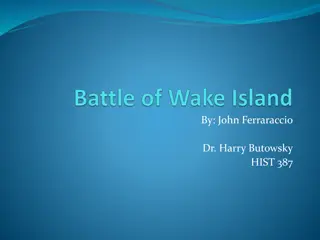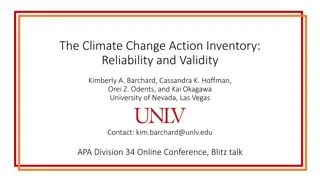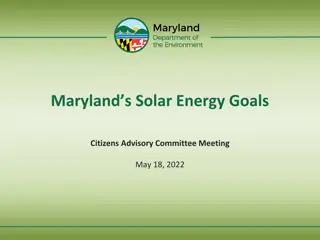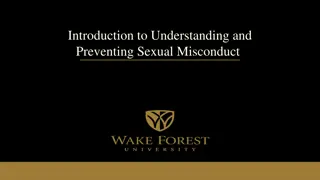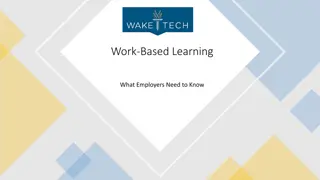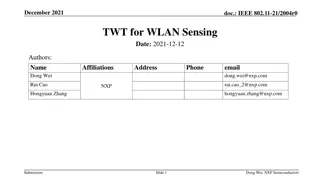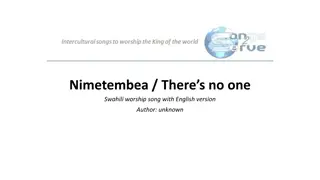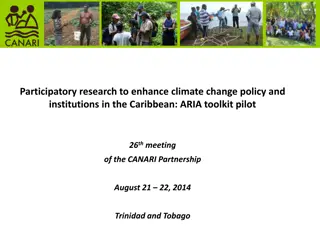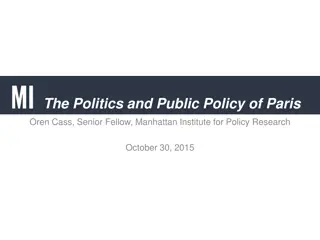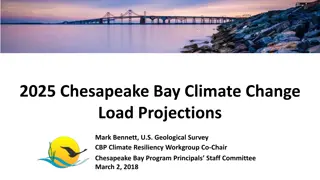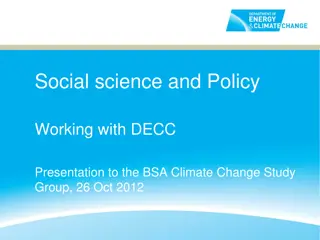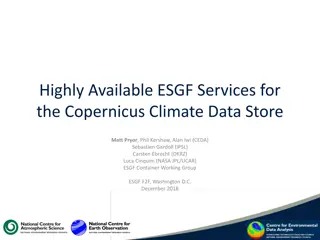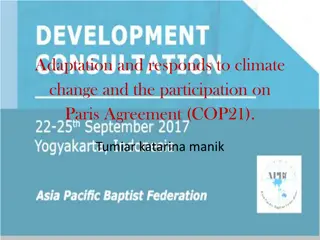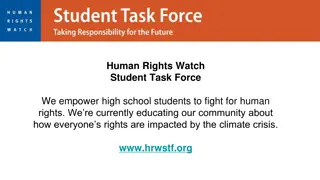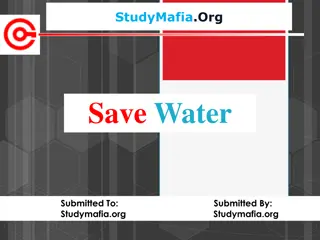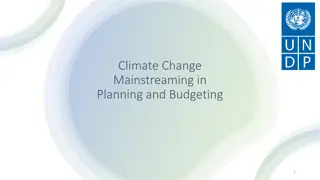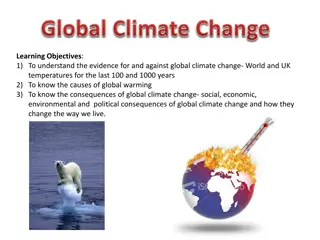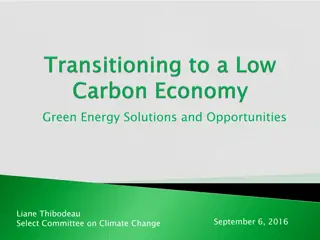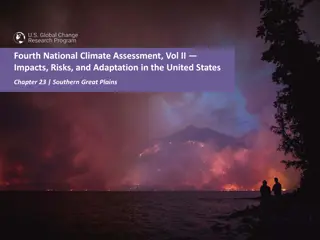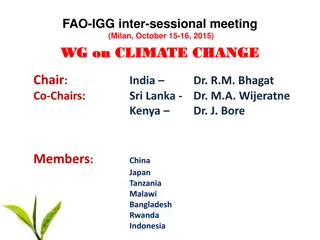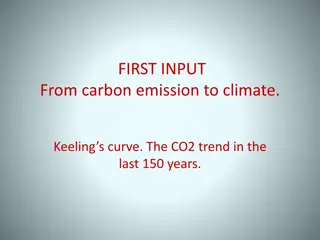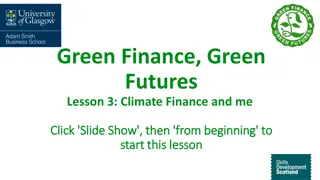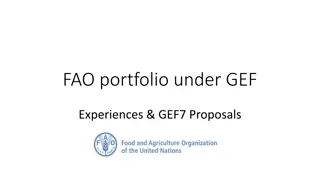Understanding Climate Change Through Melissa Etheridge's Song "I Need to Wake Up
Explore how Melissa Etheridge's song "I Need to Wake Up" sheds light on climate change and global warming. Analyze the impact of nonfiction texts and multimedia, including documentary film techniques, on shaping perceptions and promoting awareness. Delve into the controversy, reactions, and significance of climate-related terms, all within the context of building cultural bridges.
Download Presentation

Please find below an Image/Link to download the presentation.
The content on the website is provided AS IS for your information and personal use only. It may not be sold, licensed, or shared on other websites without obtaining consent from the author. Download presentation by click this link. If you encounter any issues during the download, it is possible that the publisher has removed the file from their server.
E N D
Presentation Transcript
Unit 5: Building Cultural Bridges GOALS: To examine how nonfiction texts influence our perceptions of what is true. To analyze how writers and speakers use evidence and appeals to support a claim. To examine the credibility of a text or its author To explore a complex issue or problem from multiple perspectives and work with peers to present a solution To use media strategically to enhance a presentation
I Need to Wake Up by Melissa Etheridge SpringBoard pages 311-312. Read the following lyrics once. Make a prediction in the margin of what images you would expect to see based on your interpretation of the text.
I Need to Wake Up by Melissa Etheridge What do the terms climate change and global warming mean to you? Which one seems to be a more controversial term? How do you respond to hearing the terms in the media or at school? Why do these terms provoke such strong reactions from some people?
I Need to Wake Up by Melissa Etheridge Etheridge s song won the 2007 Academy Award for Best Original Song for its use in the film An Inconvenient Truth, which argues that climate change poses a threat to humankind so severe that immediate action is needed. With that in mind, reread the text, looking for words or phrases that take on a more specific meaning relevant to this context. List some of these in the chart on page 313 of your SpringBoard book as well as your interpretations of what their new meaning might be.
I Need to Wake Up by Melissa Etheridge https://www.youtube.com/watch?v=JUVqUz8m2PQ As you watch the video of this song, consider how the video s images affect your understanding of the lyrics. In particular, observe how the video uses these documentary film elements: primary footage (scenes shot by the director specifically for the film, including interviews or footage of the performer/filmmaker) archival footage (scenes taken from other sources, such as news broadcasts or home video) still images (photographs as opposed to video footage, although the camera may pan or zoom on the photo), and text (subtitles, labels, graphics, etc.) to help support the video's message
Documentary Film Techniques Film Makers Must Take Into Account: Primary footage scenes shot specifically for the film (i.e. locations, interviews) Archival footage scenes taken from other sources (i.e. news & home video, interviews) Still images photographs as opposed to video Dialogue v. Narration Diegetic sounds Sounds from the location or subject Non-Diegetic sounds Sounds added later for effect (i.e. music) Subtitles words that add additional information to the images Labels & Graphics images that add additional info. to spoken words Sequence is how the film makers decide to order different film elements Transitions are techniques (visual and audio) that film makers use between film elements What their audience will see. When you watch the video, you will use the film techniques from the notes we took to describe HOW film makers use each of these techniques. Refer to pages 15 & 16 of the packet for additional terms. What their audience will hear. What their audience will read. How to put it all together.
Class Worksheet & Discussion As a class, we will fill out the worksheet from the video. As you notice ideas that are not listed on your own worksheet, add them. When we look at all of these elements together, what effect do they seem to be having? In other words, what point are the filmmakers trying to make, and how do they combine all of these elements to make it?
Entry Task In your own words, define the term stakeholder and how it relates to a documentary film.
Understanding Stakeholders Once there is a possible solution to a problem, Stakeholders are individuals and/or groups who are motivated by various concerns about a certain subject. Stakeholders need to be identified, and then observed in three major ways. Stakeholder Values & Interests Stakeholder Impact Stakeholder Involvement This asks you to consider what it would take to enlist the support of stakeholders, and reduce What values motivate the stakeholder? What benefits does the stakeholder get from participating in this project? What changes might the stakeholder need to make after participating in this project? How could the stakeholder possibly be damaged or thrown into conflict by participating in this project that negative response have? (Very Negative, Somewhat Negative, Not Negative) initiative? This refers to how important the stakeholder s participation is to the success of the project. their opposition to the project. How would you approach them? What kind of information would they need? What are their limits to changes? What other individuals or groups would influence the stakeholder to support your What role does the stakeholder need to play for the success of the project, and how likely is that success? How likely is the stakeholder to negatively respond to the project and what impact would
A B C D Stakeholders Presentation been definitively explored, and the policy proposal is a logical extension of stakeholder interests Stakeholder aspects have All stakeholder aspects have been reasonably identified, and lead to a reasonable policy proposal. Stakeholder aspects have been somewhat covered but need more depth. Policy proposal is vague and/or only somewhat logical Stakeholder aspects are brief and/or misunderstood. Policy proposal is brief and/or makes little sense. After watching the documentary, you and a group of no more than three others will be responsible for developing a brief presentation that identifies and describes one stakeholder. Presentations will need to: Identify the stakeholder s values and interests, impact, and involvement. Make a policy proposal that corresponds with the stakeholder. Include all members of your group equally.
The Rhetoric Of Media Rhetoric is the strategic communication of ideas in order to convince an audience of a specific idea or claim. You can begin to identify these strategies by looking at: Sender-Receiver Relationships Message Emotional Strategies Logical Strategies / Fallacies Language Use the worksheet during the first section of the documentary in order to begin understanding the media s use of rhetoric.
Subjectivity Versus Objectivity When we talk about something being subjective, we mean that a person s judgment is shaped by personal opinions and feelings, instead of outside influences. When we talk about something being objective, we mean that a person s judgment is not influenced by their opinions or feelings. Only the facts matter. When documentaries make a policy proposal on an issue, what is the better tactic to adopt? Why?
Your Final Project Work with a group of no more than 4 people to create a documentary film on an environmental conflict. Your film needs: Research-based evidence Persuasive Appeals Documentary Film Techniques Appropriate roles filled: Director: Chooses shots, angles, lighting & camera movement Producer: Works out logistics, shooting locations, interviews, meetings & group- member accountability Writer: Scripts, storyboards, and citations (preferably oral citations) Editor: Lead editor of footage, may also designate specific editing responsibilities to other group members. Choose your groups & designate your roles
Group Task #1 In your documentary groups, you need to create a poster that includes: a group logo a mission statement a short bio about yourselves and how your perspective on your topic has been shaped
TED: Spreading Ideas. (2 words) Smithsonian: The increase and diffusion of knowledge. (6 words) USO lifts the spirits of America s troops and their families. (9 words) Livestrong: To inspire and empower people affected by cancer. (8) Invisible Children: To bring a permanent end to LRA atrocities. (8) The Humane Society: Celebrating Animals, Confronting Cruelty. (4) Wounded Warrior Project: To honor and empower wounded warriors. (6)
Public Broadcasting System (PBS): To create content that educates, informs and inspires. (8) National Wildlife Federation: Inspiring Americans to protect wildlife for our children s future. (9) American Heart Association: To build healthier lives, free of cardiovascular diseases and stroke. (10) Heifer International: To work with communities to end hunger and poverty and care for the Earth. (14) ASPCA: To provide effective means for the prevention of cruelty to animals throughout the United States. (15) Kiva: We are a non-profit organization with a mission to connect people through lending to alleviate poverty. (16) New York Public Library: To inspire lifelong learning, advance knowledge, and strengthen our communities. (10) Defenders of Wildlife is dedicated to the protection of all native animals and plants in their natural communities. (15)
P alantir Director: Arthur Miller Producer: F. Scott Fitzgerald Writer: Jon Krakauer Editor: Zora Neale Hurston Examining the issues that define our time.
Arthur Miller Arthur Miller was born in Harlem, New York in 1915 and attended the University of Michigan before moving back East to write dramas for the stage. His first critical and popular success was Death of a Salesman, which opened on Broadway in 1949 and won the Pulitzer Prize along with multiple Tonys. Francis Francis Scott Minnesota. His namesake (and second cousin three times removed on his father's side) was FrancisScott Key, who wrote the lyrics to the "Star-Spangled Banner. Scott Key Key Fitzgerald Fitzgerald was born on September 24, 1896, in St. Paul, Jon Jon Krakauer Krakauer (born April 12, 1954) is an American writer and mountaineer, primarily known for his writings about the outdoors, especially mountain-climbing. Zora Neale Hurston Zora Neale Hurston (January 7, 1891 January 28, 1960) was an American novelist, short story writer, folklorist, and anthropologist. Of Hurston's four novels and more than 50 published short stories, plays, and essays, she is best known for her 1937 novel Their Eyes Were Watching God.
Re-do Each group is responsible for creating a slide with your group s production logo, mission statement, and short bios of each group member. These are due Monday, May 23 by 2:05 pm. Please turn in to me in one of the following ways: 1. email it to me @ jkink@everettsd.org 2. share it with me on Google docs 3. print it off and turn in a hard copy to me.
Policy Proposals A policy proposal suggests a plan of action that will address whatever issue is being explored. These proposals: Usually attempt to solve a problem. Must consider what stakeholders will find acceptable / unacceptable. In order to come up with a policy proposal: 1. Identify the topic (the problem being addressed). 2. Come up with a rationale (Why is the proposal needed?). 3. Identify the stakeholders, and consider their reactions.
Group Task #2 Your final project asks you to research an environmental conflict and present a solution to that problem in the form of a documentary film. To practice this, choose either Cosmos: Episode 12 or The Invasion of the Killer Whales and, as a group, come up with a policy proposal. Write this on the index card provided. You have 5 minutes to do this.
Deciding On Your Topic With your group, work for several minutes to fill in as many possible topics as you can come up with together. which topic you will use. Rejoin your original group and discuss your options. Together, come to an agreement about Meet with people from at least 3 other groups and add to your chart as you hear new ideas.



